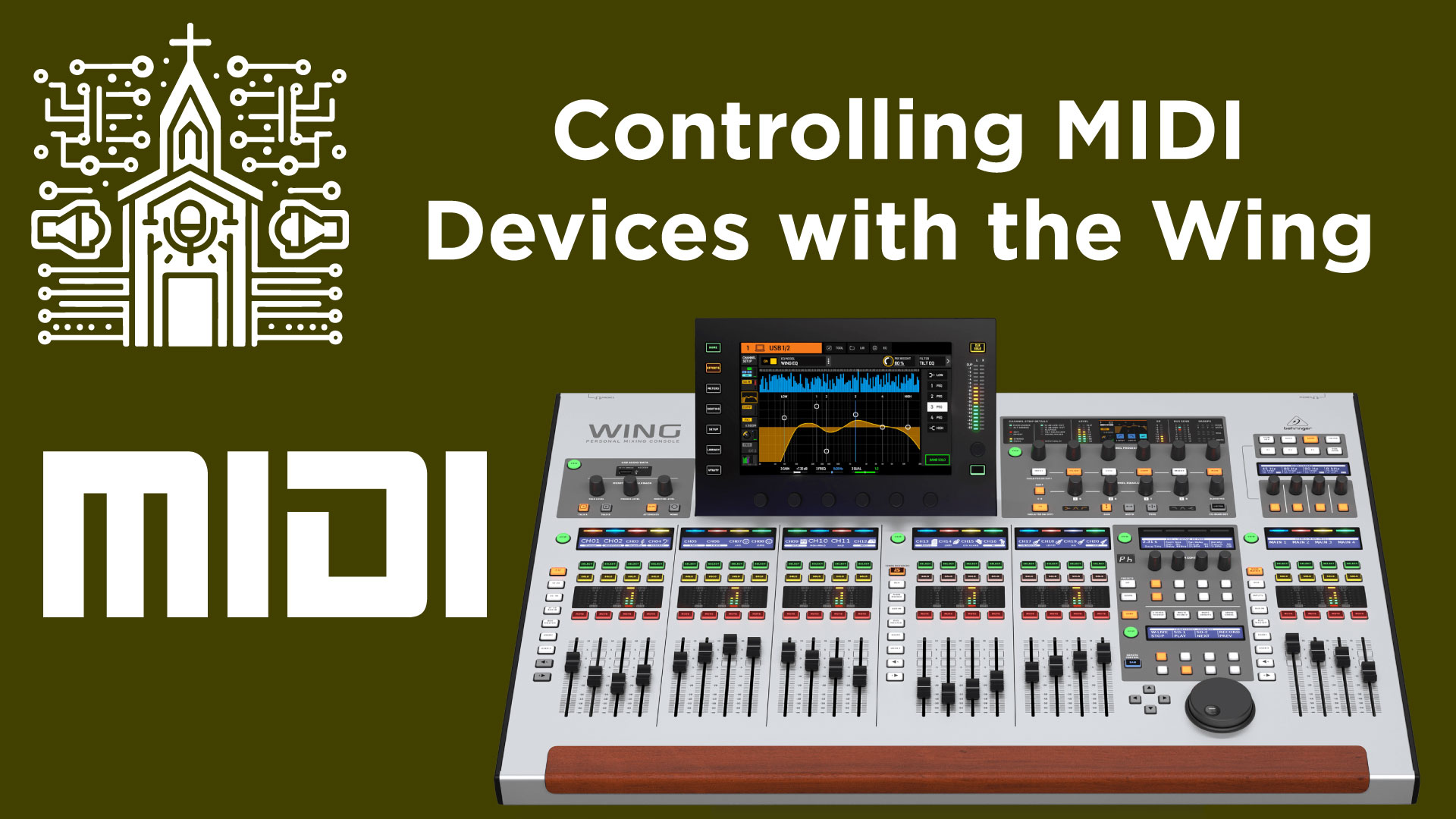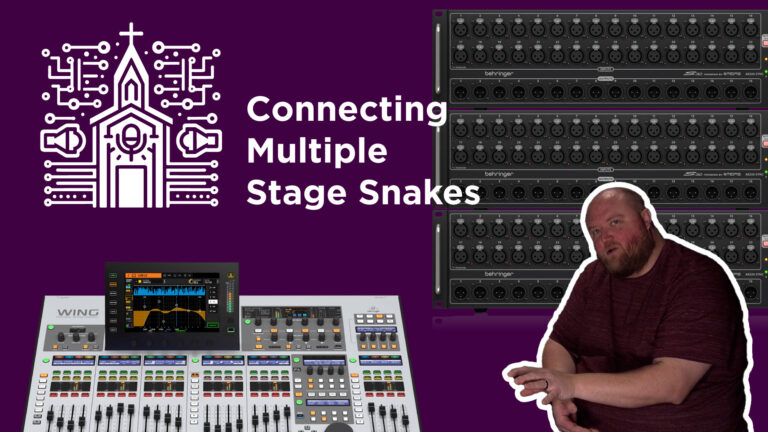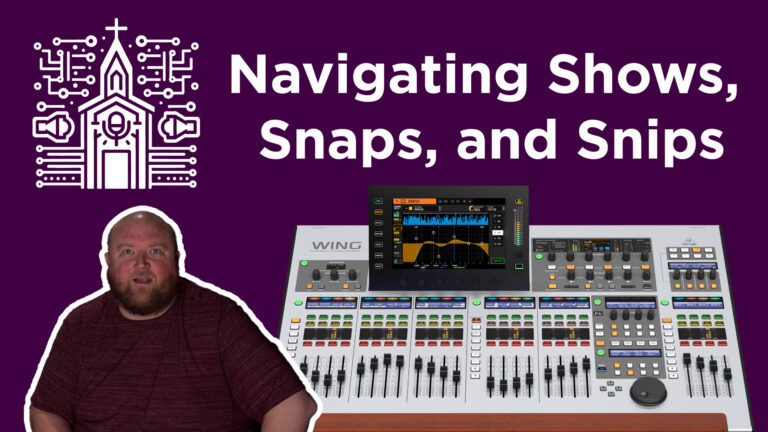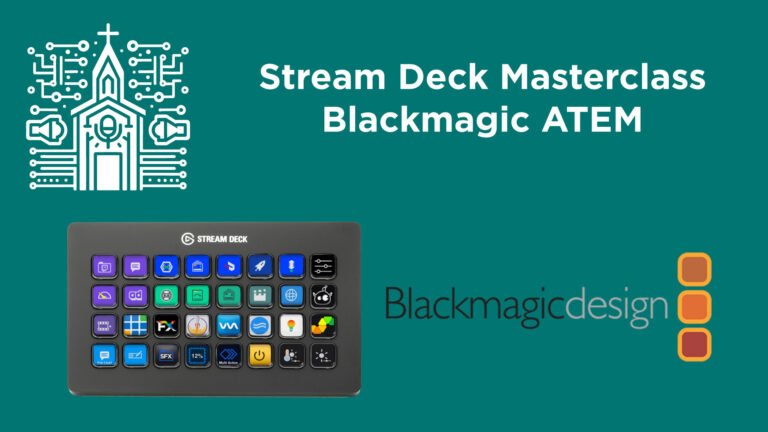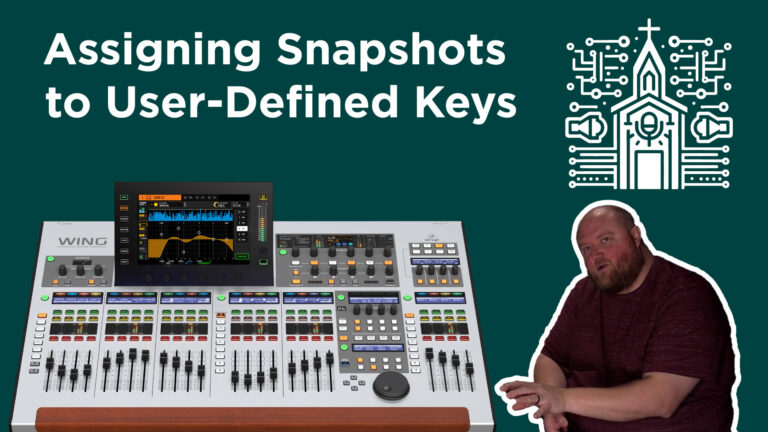MIDI Magic: Controlling Lights and Visuals with the Behringer Wing
Harnessing the Power of MIDI on the Behringer Wing for External Control
Introduction
The Behringer Wing mixer is not only a powerhouse for audio mixing but also offers extensive MIDI capabilities. This functionality allows users to control external software applications, from lighting programs like Mad Mapper to media presentation tools like ProPresenter, directly from the mixer. This article explores a simple yet powerful application of the Wing’s MIDI controls to enhance live performance environments.
Setting Up MIDI on the Behringer Wing
- Enabling MIDI: The first step involves accessing the mixer’s setup menu, navigating to the ‘Remote’ tab, and enabling external MIDI control via USB. This setting allows the Wing to send MIDI signals through its USB port.
- Configuring User-Defined Keys for MIDI Output: The next step involves assigning a MIDI note to one of the mixer’s user-defined keys. By selecting ‘MIDI Note Push’ and specifying a channel and note, users can create a trigger button that sends out a specific MIDI signal when pressed.
Integrating with External Software
- Connecting to the Software: With the MIDI setup complete on the Wing, the next step involves connecting the mixer to a computer via USB and ensuring the selected software recognizes the Wing as a MIDI device. This usually requires restarting the software after connecting the mixer.
- Mapping MIDI to Actions: In the chosen software, users must map the received MIDI signal to a desired action, such as triggering a scene or changing parameters. This often involves a ‘learn’ function that automatically associates an incoming MIDI signal with a specific control within the software.
Practical Application: Controlling Mad Mapper
- Scene Setup: In Mad Mapper, users can create a scene that they wish to control with the Wing. This could involve color changes, scene transitions, or any number of visual effects.
- MIDI Mapping: Using Mad Mapper’s ‘learn’ function, users can assign the MIDI signal sent from the Wing’s user-defined key to trigger the desired scene or effect.
- Live Control: With the mapping complete, pressing the designated user-defined key on the Wing will trigger the scene in Mad Mapper, showcasing the seamless integration between audio and visual elements during live performances.
Conclusion
The Behringer Wing’s MIDI functionality unlocks new possibilities for creative expression, allowing users to extend their control beyond audio to encompass visual elements in their live setups. By following the steps outlined above, users can set up their Wing mixers to interact with a wide range of software applications, enhancing their live performance capabilities.

